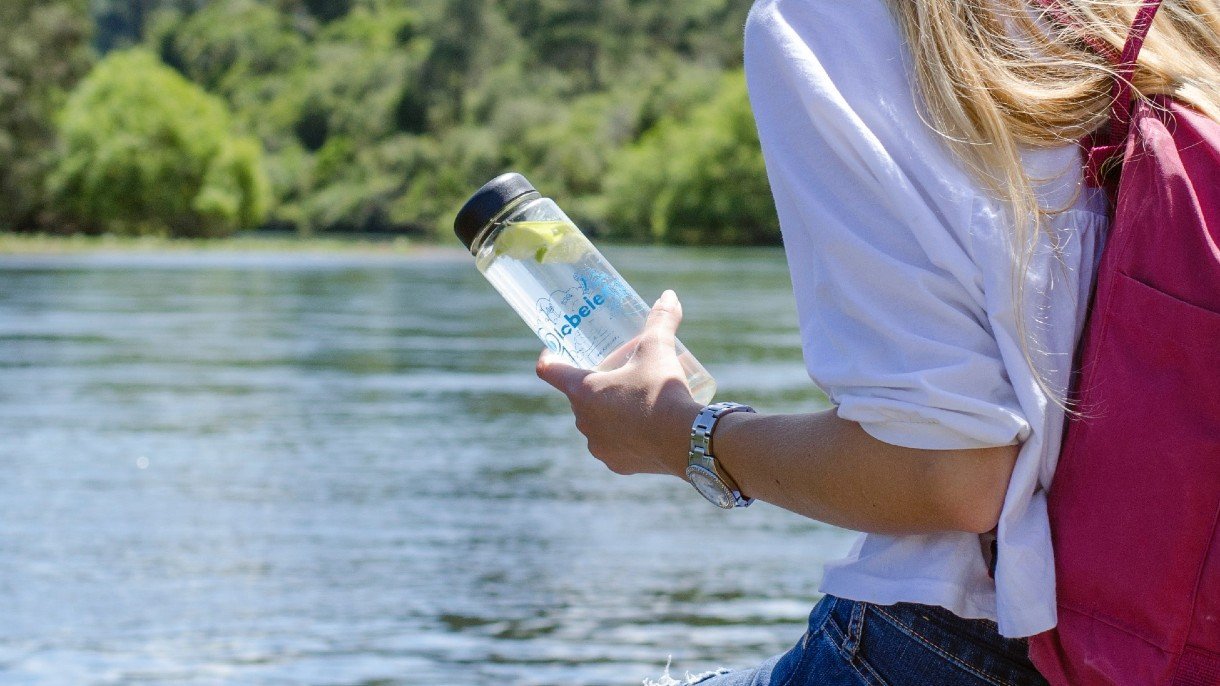Why Do Plastic Water Bottles Start to Smell Bad After a While?

Reusable water bottles are essential to limiting single-use plastic. However, along with their convenience and sustainability, these bottles are also prone to rather “undesirable” smells.
So, why do reusable plastic water bottles start smelling bad after a while?
Let’s look at these reasons a little more closely.
Poor cleaning
One of the main reasons for the foul smell of plastic bottles is an improper cleaning routine.
Reusable plastic water bottles develop odors and slight discoloration over time if not properly cleaned after use. It can occur faster if the water bottle is stored in a wet place or sealed for a long time with water.
Sometimes, people keep using the bottle for an extended period of time without rinsing with soap. Over time, unpleasant odors develop that can be tasted when drinking. Improper storage can also result in the development of bad smells.
Most people know that polyethylene terephthalate (PET) water bottles need to be cleaned, but many people keep reusing PET bottles for an extended period of time without proper cleaning.
When cleaning and quality standards are maintained, the bottled water is considered free of microbial contamination until it is unsealed. Bacteria find a way to get into the bottle, and if it is not cleaned regularly, it will stink.
It is recommended to properly clean the plastic bottle if it is reused multiple times. Another recommendation is to empty the plastic bottle if it will not be used for a more extended period of time and turn it upside down to drain all the water. Dry bottles will have less chance of carrying microbial contamination.
Microorganisms
Some think that water is the only thing they’re putting into their bottle, so they don’t wash the water bottle every time they use it. However, every time you take a sip from your bottle, microorganisms can enter from your mouth.

Dust particles in the air can also enter the bottle and grow, causing a foul odor. Water is pure and dissolves organic matter that supports the life of microorganisms. If you notice an oily/slippery layer inside the plastic water bottle, it is a biofilm of the microorganisms forming, which produce bad smells at later stages.
Once a PET bottle contains microorganisms, they begin to use dissolved oxygen in their respiratory process until all the Oxygen in H2O is consumed. When the oxygen in the water runs out, anaerobic microorganisms emerge and release carbon dioxide (CO2), methane (CH4), hydrogen sulfide (H2S), and sulfur oxide (SO2) into the water. H2S and SO2 are mainly responsible for the bad smell.
Sulfur Compounds
In addition to microbial activity in the water, some water sources may contain sulfur compounds, mainly from wells/streams. Sulfur compounds grow slowly and give off a very foul odor. High sulfur levels can produce strong odors in the water in PET bottles.
Soap Mold
People use many methods to remove smells and reuse their plastic bottles, however, soap is the most common option. But, be warned! Excessive soap use may leave some traces either on the lid or inside the bottle, which gradually molds and can contribute to odor problems.
Using a balanced level of soap, and choosing natural soaps, is an essential step in keeping your bottles clean.
Chemical Reactions and the Leaching of Plasticizers
Last, but certainly not least in the causes of bad smells in plastic water bottles is the reaction of salts/minerals in water with plastic. This slowly starts eroding the plastic layers and causes smells to form.
The reusability of plastic bottles has a time limit, after which they begin to deteriorate and begin producing a lousy odor.
The use of polymer in plastic bottles’ manufacturing process has some limitations because they can’t support all that these products demand. To make up for these limitations, plasticizers and other materials are added to the polymers during the manufacturing process. Sometimes, a small portion of these materials leach out and produce a smell.
This smell is more plastic-like. To avoid this, plastic bottles can be pre-leached by adding a concentrated baking soda solution and letting them settle overnight.
The most rigid plastic water bottles are made of either polypropylene (medium to dark color), polyethylene plastic (which tends to be cloudy in appearance), or copolyester (which may be clear, matte, or colored). Polyethylene has a greater capacity to retain taste and odor than polypropylene and copolyester. However, all plastic water bottles can produce unwanted tastes and odors if mistreated.
PET is another commonly used material used in manufacturing. PET is a lightweight material that has high chemical resistance and good tensile strength. Most bottled water is sold in PET bottles. These PET bottles have a limited window of reusability and are prone to odor production. The traces of PET can also leach into the water.
How to keep your bottle clean and scent-free
It is recommended to clean the plastic water bottle regularly and never leave it dirty or full of water for an extended time. Immediate draining after use and regular cleaning will retard the production of bad smells in your plastic water bottles.
A balanced quantity of soap is recommended for cleaning, and you should always take care of any remaining traces of soap inside the lid or the water bottle. The use of soap will also avoid microbial contamination, which is the leading cause of odor production.
If your situation is a bit direr, plastic bottles can also be quickly disinfected and de-odorized using a small amount of bleach. The concentration of sulfur compounds should also be monitored if long-term storage of water is required.
Use the plastic water bottles for the recommended period of time. If the smell persists, it is better to discard and replace your bottle.
Looking for a fun project? You can also turn your old bottle into a vase with a little paint and inspiration!
